Planning a garden can sometimes feel like an uphill battle. Do you have an aspen tree you want to landscape around or below but have no idea where to start? Well, we've done extensive research into this tree species and have plenty of great ideas to share. Let's discuss them all below!
For those working with aspen, there are plenty of plant ideas that you can try beneath your tree. Some of our top plant picks include:
- Cosmos
- Bachelor's Buttons
- Zinnias
- Soapwort
- Sedum
- Thyme
- Mint
- Catnip
The key here is finding plants that require fewer nutrients. Considering your aspen tree will be the bigger, more needy plant nutrient-wise, it's essential to plant items that won't need to compete directly with it.
As we begin, we will cover all things aspen trees and discuss what plants you can grow under them. Whether you're looking for color, a new landscaping idea, or are curious about these gorgeous trees; we're here to help. With that said, let's dive head first into this topic!
![A small pond surrounded with aspen trees, What To Plant Under Aspen Trees [8 Suggestions]](https://gardentabs.com/wp-content/uploads/2022/07/What-To-Plant-Under-Aspen-Trees-8-Suggestions.png)
Can You Plant Something Underneath An Aspen Tree?
Yes! As long as the plant you decide on requires fewer nutrients, it should work fine beneath your aspen. In general, flowers and herbs with shallow roots will thrive below trees, including aspens, so that's a good place to start.
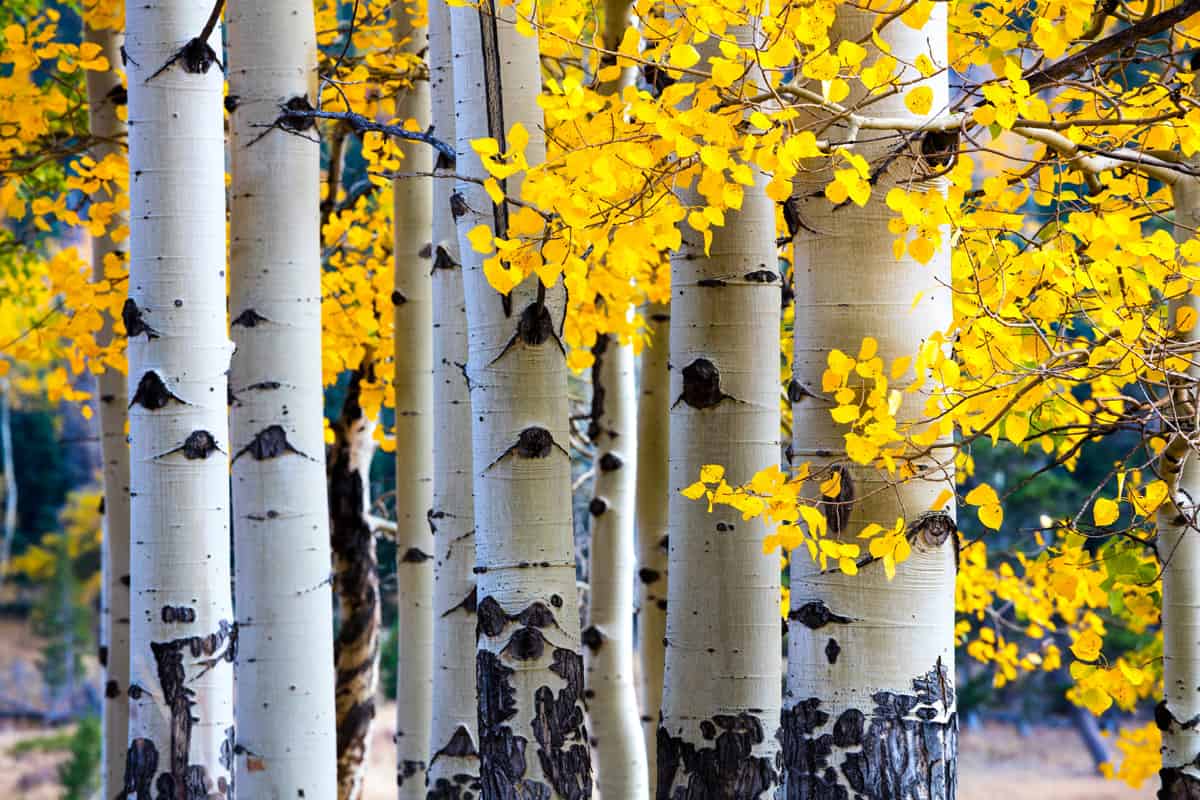
Considering whatever you grow beneath your tree will get less sunlight, water, and attention, it's essential to choose a plant species that isn't super needy.
A common mistake many gardeners make when choosing plants under their aspen is deciding on one with deep roots and a need for sun exposure.
Even if your aspen has a patchy canopy, you can't expect whatever's underneath it to get full sun.
Water can also become an issue when growing something under aspen. For example, the soil may remain damp between waterings around your plants, as the sun isn't hitting the ground consistently.
In contrast, your aspen may also be extra thirsty, drinking most, if not all, the water you give the two coexisting plants.
Therefore, giving both plants plenty of TLC is imperative, which can be time-consuming.
Our Plant Picks For Under An Aspen
Now that you know you can grow certain plants underneath your aspen, it's time to discuss the options we've found:
1. Cosmos
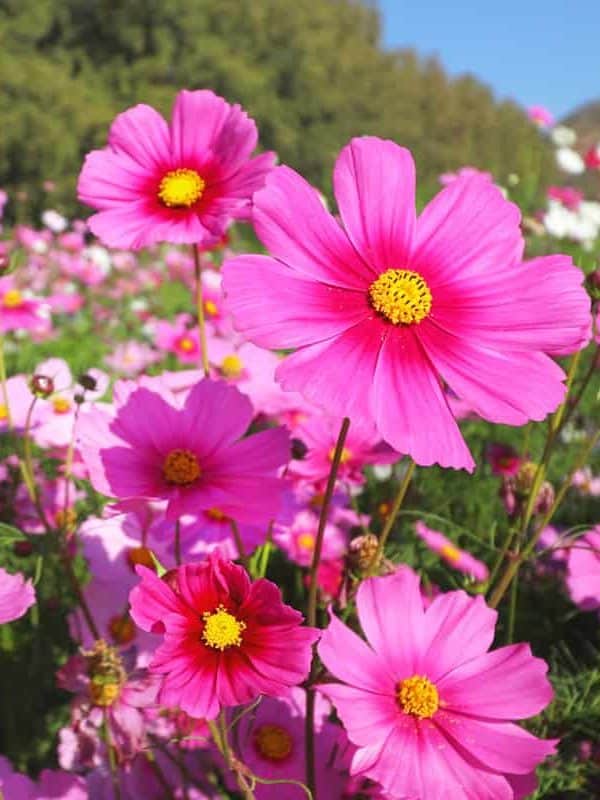
First, we have a great annual flowering option for those wanting to add color to their landscaping. Besides being gorgeous, cosmos bloom throughout summer, attracting birds, bees, and even butterflies.
Another major benefit of growing cosmos is that they can survive (and even thrive) in poorer soil conditions. Planting them beneath aspen is a great choice as they aren't very picky.
These stunning flowers also do well in the shade if you're in a hotter USDA growing zone, so that's perfect for those in the desert or western US.
Crazy Mix Cosmos (Cosmos bipinnatus) Non-GMO Seeds
These cosmos seeds are 100% natural, GMO-free, should come with roughly 7,000 seeds, have a summer blooming period, and have great reviews from verified customers.
Follow this link to view them on Amazon.
2. Bachelor's Buttons
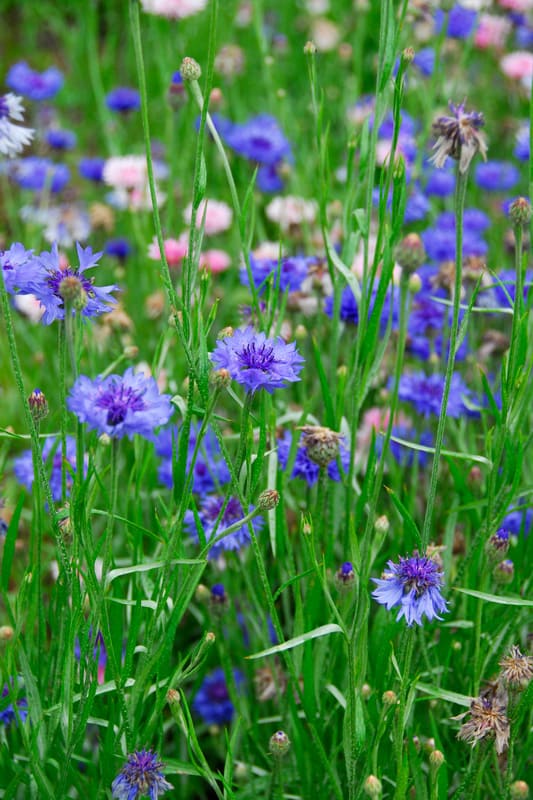
Next, we have another beautiful flower option beneath your aspen tree. In general, bachelor's buttons will be easy to grow and manage, often thriving in damper, shadier conditions.
Also known as the cornflower, you can expect these plants to thrive in poorer ground environments, making them ideal for underneath aspen (or any tree, really).
Furthermore, bachelor's buttons tend to be annuals and grow between one and three feet, so they shouldn't cause any problems below a tree.
3. Zinnias

Third, we have zinnias under an aspen tree. Not only are these flowers known to grow best in the southwestern United States, but they will also thrive in poorer soil conditions.
These flowers typically produce daisy-like blooms and attract butterflies from near and far. Moreover, zinnias are usually annuals, although some come back every few years in their original location.
One thing to note about this flowering plant species is that they must have well-drained soil. So, even though they can survive under aspen, the ground will need to be porous and not ever pool with water.
4. Soapwort
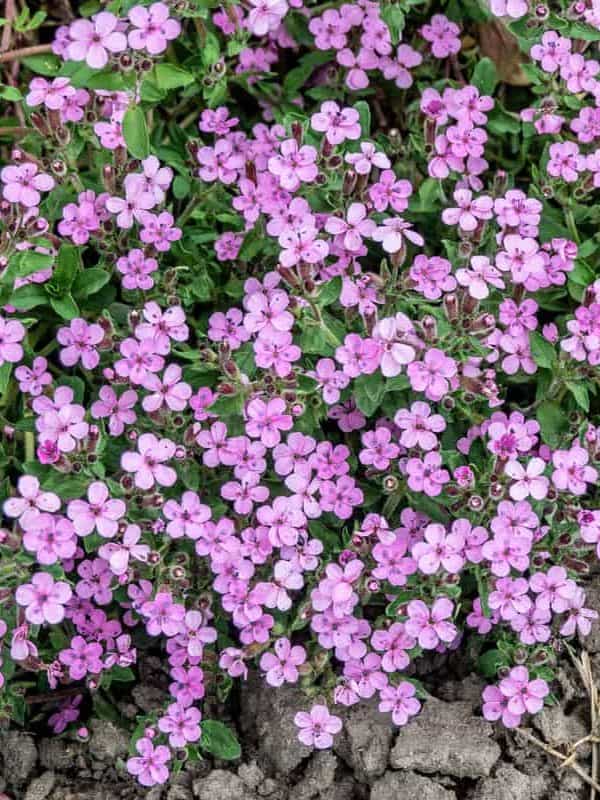
Next, we have a delicate flowering plant for underneath aspen trees. This wildflower species is native to Asia and Europe but can grow in moderate USDA climates.
Depending on the variety you grow, these flowers will be herbaceous, annuals, or perennials. Some will even have woody bases, so these are great for anyone wanting a flower to come back every year.
Color-wise, you can expect soapworts to be purple, pink, or white, so they're great options for adding color to your landscape.
Seedville Rock Soapwort Flowers
These flower seeds will include 500 pieces, have a fall or spring expected blooming period, prefer partial shade, and grow between two and three feet tall.

Check out these flower seeds on Amazon.
5. Sedum
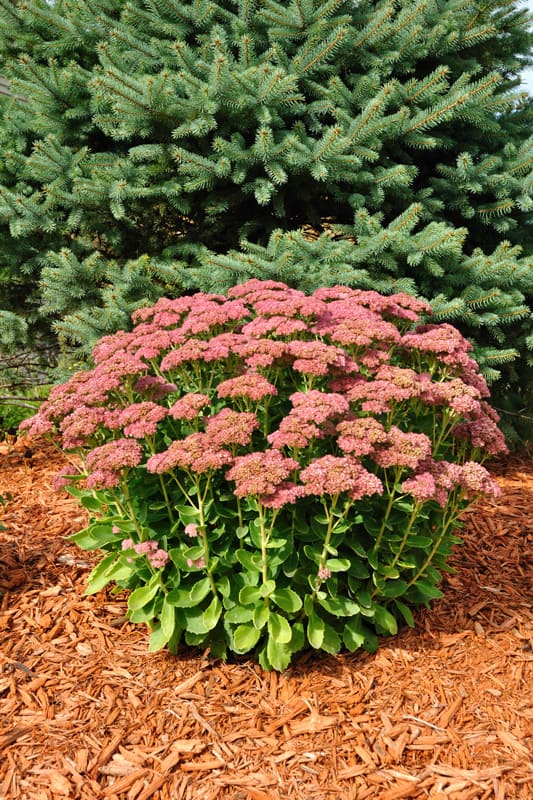
Following a floral theme, we have sedums to try underneath your aspen. Typically, these flowering plants will do best in areas with a few hours of sun daily, so they work well beneath a tree's canopy.
Furthermore, sedum loves damp soil, which is perfect considering your aspens will stay moist throughout the year.
Sedum should also bloom mid-summer into the fall and often have star-like flowers. You can also successfully grow sedums in sandier, loamier soils, so that's something to keep in mind.
6. Thyme
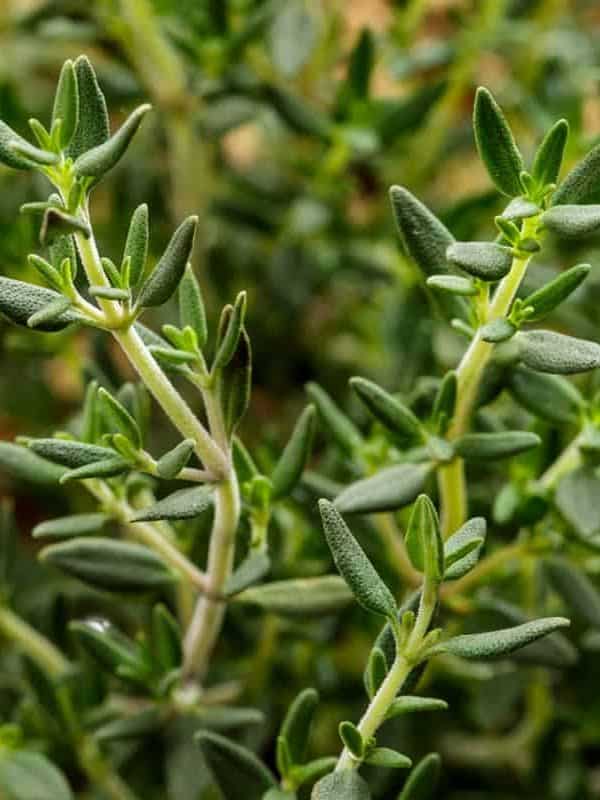
Switching to an herb idea for your aspen, we have thyme. Generally, growing thyme beneath an aspen tree will be easy, as these plants don't require much attention to thrive.
This herb species will be perennial, so you can expect it to continue growing for years to come. Moreover, thyme is an evergreen plant, meaning it won't lose its foliage in the cooler months.
You can even use thyme for your cooking as a seasoning and a natural remedy for bacterial and fungal infections, with many claiming it helps stop coughing.
7. Mint
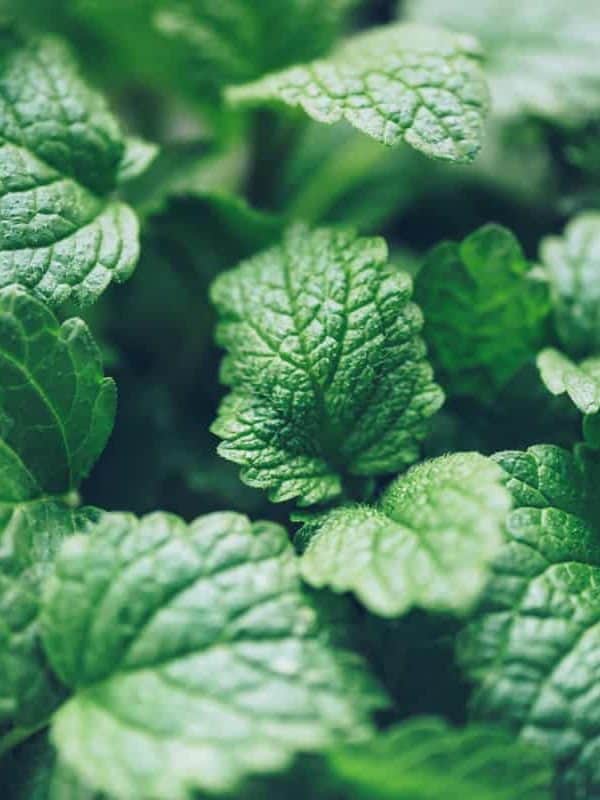
Continuing our herb theme, we have mint under an aspen tree. Generally, this perennial herb will grow in poorer soil conditions and doesn't require too much sun to live.
Also, mint tends to have shallow roots, meaning it won't try and invade your aspen's soil.
One of the main benefits of planting mint in your garden is the smell. Considering that every variety of this herb will have a gorgeous scent, you can be assured your new plant will bring plenty of visitors to your garden.
Soil-wise, as long the ground your mint is in drains well, you shouldn't run into any issues.
Live Aromatic and Edible Herb - Mint
These live mint plants will come in a pack of three, be roughly eight inches tall, and four inches wide, and have excellent online customer reviews.

Check out these herbs on Amazon here.
8. Catnip

Lastly, we have another herb you can grow beneath an aspen tree. This member of the mint family is perfect for those with feline friends, as it is a natural stimulant.
Famous for its scent and effects on cats, growing catnip below an aspen tree can be a great idea. Especially if you prefer to grow your catnip at home, this can save you some money at the pet store.
In addition, catnip will grow in poorer soil conditions, often requiring a few hours of sun throughout the day to survive. As they bloom, these herbs will also produce purple flowers, so that's another benefit.
How Deep Are Aspen Tree Roots?
Surprisingly, aspens have relatively shallow roots. Most times, you can expect your tree's roots to only span 12 inches below the ground's surface, so they're not highly expansive.
As we said, you want to grow plants below aspen with shallow roots. Considering your tree's root system won't be very deep, the last thing you want to do is introduce competition in the soil.
One of the most common issues with growing aspens is planting them too close together and growing other invasive shrubs or flowers nearby.
In general, it's best to choose smaller, less expansive species to grow anywhere near aspen, as this reduces the chances of developing any nutrient-deficient related problems.
Do Aspen Trees Have Invasive Roots?
Yes, it is likely to see the roots of aspen become invasive. Besides only going 12 or so inches into the soil, aspens tend to rely on their root's width for ground security.
Considering a tree needs to stabilize itself in the ground, it's not uncommon for aspen roots to sprawl in either direction. Typically, this will be a few feet in either direction of your tree's base, but this can vary.
According to The US Forest Service, some researchers have found aspen roots spreading 30 feet or more in each direction, as they can repopulate through "suckers."
So, you don't want to grow anything else with invasive prone roots near aspen, as this can become a mess for every plant involved.
The same applies to growing multiple aspens, so we recommend giving them 10-15 feet each if you want to grow multiple throughout your property.
To Finish
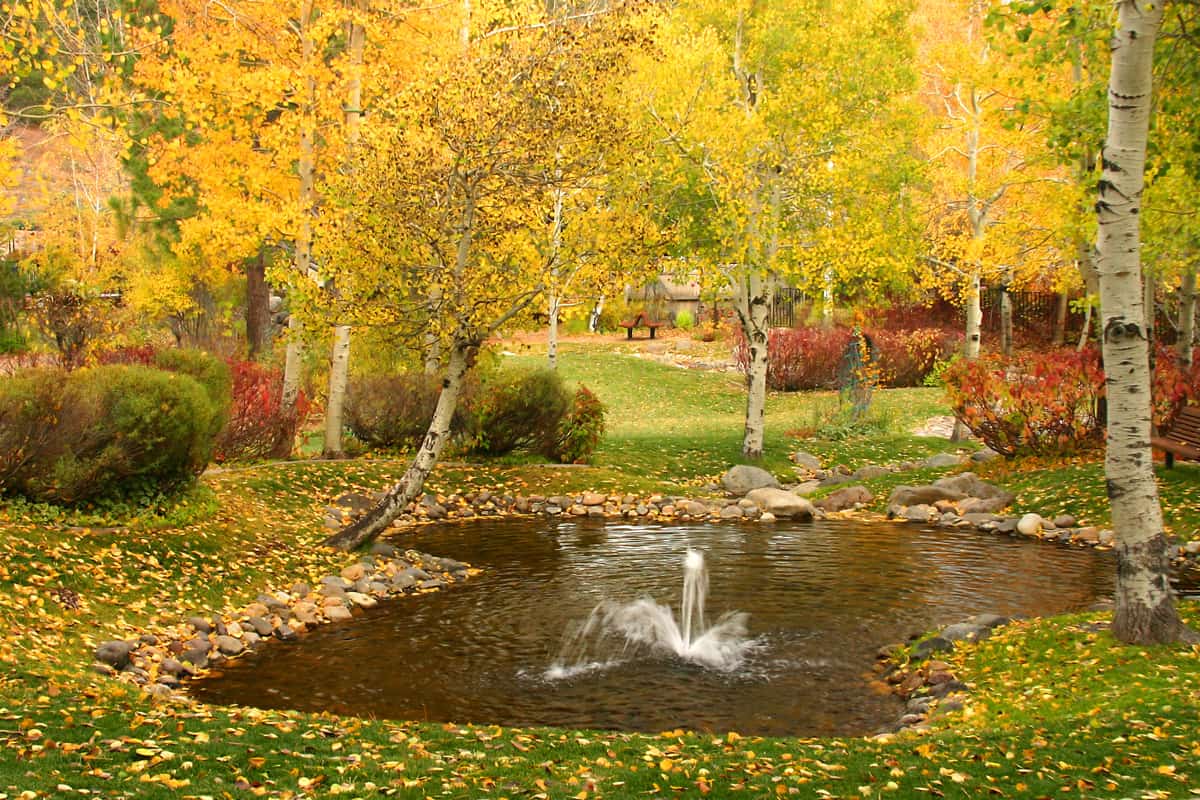
Whether you have an aspen tree in your garden or want to plant one, it's always nice to have other landscaping nearby. From what we found, you can grow certain flowers and herbs under aspen, as long as they don't require much attention and don't have invasive roots.
In addition, whatever you grow underneath, aspen needs to be able to handle poorer ground conditions. Considering that your tree will suck up most of the water and nutrients, your plant needs to be able to work with what it has.
Again, it's best to find plants with shallow roots, shade tolerance, and love for moist soil.
Made it this far? Check out these helpful related tree posts below!
What To Plant Under Cherry Trees? 11 Great Suggestions!
What To Plant Under Redbud Trees [Flowers, Grass, & More!]
15 Gorgeous Trees With White Bark [And Where You Can Grow Them]
